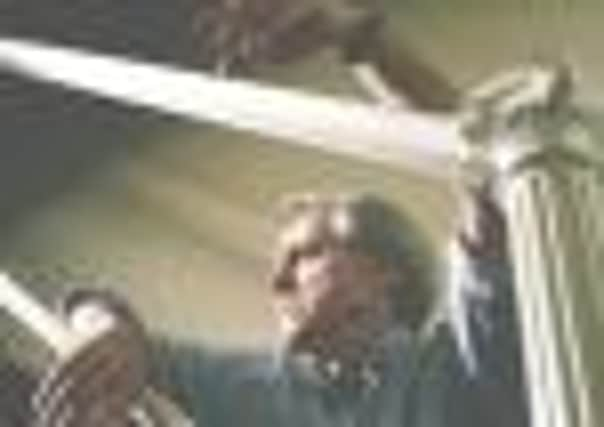Book review: The Angel Esmerelda, Nine Stories


An unreservedly literary writer, he is often more admired than adored, and persuading sceptical readers to embark on his novels can be a problematic proposition.
Should you start with the “terror” novels of the 1980s and early 1990s such as White Noise, Libra and Mao II, or the 1960s and 1970s comedies such as Ratner’s Star, Americana and End Zone, or just plunge in with the epic Underworld? (Most critics, myself included, have been moderately disappointed with his more recent work, although re-reading Point Omega, I found it better than I had remembered).
Advertisement
Hide AdAdvertisement
Hide AdThe publication of The Angel Esmeralda short-circuits this problem. It is the perfect introduction to his themes and style. It is, unusually, his first collection of short stories after 15 novels, and brings together work from the 1980s to the present. It is his entire career in miniature, and the later stories show that his talent is undiminished.
The opening story, Creation, about a stranded passenger’s desultory affair, is a good example of the complexity of emotions DeLillo captures. It is simultaneously morally apathetic and quietly sinister. Whereas in the work by John Updike or Philip Roth that covers broadly similar territory, the authorial focus would be on the ethics of betrayal or the stricken nature of masculinity, DeLillo hints at almost subconscious levels of manipulation and need, rather than desire.
His depiction of sexual mores is even more chilly in a later piece, Baader Meinhof, in which a woman in a gallery (who is inexplicably drawn to paintings of the German terrorist group’s corpses and funeral) is inveigled into taking a persistent man back to her flat. What happens is abusive without being explicit. He says, “Tell me what you want”. She says, “I want you to leave”. He doesn’t. She shuts herself in the bathroom and hears him unbuckle his belt. “After a while,” DeLillo writes, “she heard him breathing, a sound of concentrated work, nasal and cadenced.” The awful volte-face is how the reader is manipulated into feeling a kind of toxic pity for the man.
The second story, brilliantly entitled Human Moments In World War III has echoes of JG Ballard in its depiction of two astronauts manning a weapons satellite, and their touching frustrations with each other. DeLillo’s fascination with paranoia and ethical complicity appears clearly in The Runner, in which a jogger witnesses a crime and its aftermath, yet seems more intent on finishing his required number of laps, and the startling The Ivory Acrobat, where a woman’s fear of earthquakes seems to mirror and reflect some far deeper horror. The Runner has a classic moment of DeLillo-esque intrusion, as the crime – a child abduction – appears from nowhere: yet it is the man’s reaction, and subsequent white lies that seem inexplicable.
The title story is a piece of quasi-magical realism, focused on an old nun and an event which may or may not be miraculous. Unlikable though she is, DeLillo gives her a speech which could well be his motto: “If you let me teach you not to end a sentence with a preposition, [Sister] Edgar thought, I will save your life”. Sister Edgar never seems like a piece of ventriloquism; but rather a properly realised distinct person.
Throughout the book there is a fascination with characters who feel somehow either absent or tangential to their own lives. These individuals yearn for a feeling of connectedness, but seem almost reconciled to their apartness. It is a theme which DeLillo has explored across his career, binding together his comedic and epic narratives.
DeLillo’s response to 9/11 has been much discussed, but the story Hammer And Sickle shows his response to the recession and economic crisis is far more nuanced and unsettling. Set in a minimum security prison for white collar criminals, it juxtaposes their routine with one prisoner’s children reading market reports on children’s television. The convicts begin to rejoice in the turbulent crises of capitalism, but as the girls begin to chant Marxist propaganda, things take a darker hue. The ending is poised with exquisite precision: there is no lecture, but a perfect portrait of the dilemma.
Advertisement
Hide AdAdvertisement
Hide AdBut if there were just a single story I’d give to a DeLillo sceptic, it would be Midnight In Dostoevsky. Two imaginative children try to create the inner lives of people they see on the street. They worry about their strange philosophy teacher. The tiny power struggles over precise words – and DeLillo is nothing if not very precise about words – leads up to a moment of inexplicable violence. DeLillo writes what could be his manifesto as an artist in one child’s interior monologue: “At times abandon meaning to impulse. Let the words be the facts. This was the nature of our walks – to register what was out there, all the scattered rhythms of circumstance and occurrence, and to reconstruct it as human noise”.
That is precisely what DeLillo has done over his career. Reading The Angel Esmeralda reminded me why DeLillo is a genius, and made me optimistic about whatever he writes next.
The Angel Esmerelda, Nine Stories
Tom Delillo
Picador £15.99